Top Ten Legends and Stories about Chinese New Year
China’s Lunar New Year traditionally starts on the first day of the first month of the Chinese lunar calendar, which is the Chinese New Year’s day and the Spring Festival in a narrow sense; while in a broad sense, it refers to the period from the eighth day of the twelfth lunar month to the fifteenth day of the first lunar month. The Chinese New Year is the most important traditional festival in China. There are many legends about the Spring Festival. Here below are top 10 interesting stories of the Chinese New Year.
Chinese New Year Story #1 - Legend of the God of Wealth
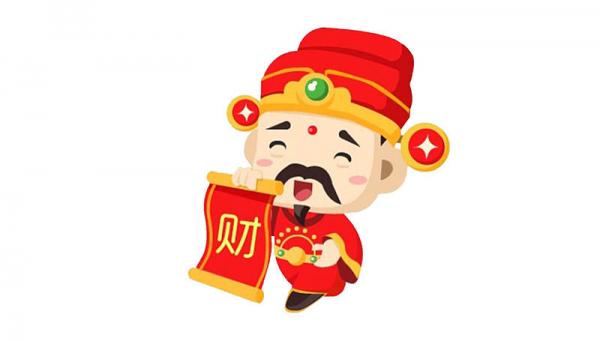
On the fifth day of the first lunar month, five days after Lunar New Year it is the specific time for Chinese people to welcome and greet the God of Wealth. Legend has it that this is the birthday of the God of Wealth. After the first day of the new year, people should make some preparations. On the night of the fourth day, every household will set up a banquet to celebrate the birthday of the God of Wealth and welcome the arrival of the God of Wealth.
Who is the God of Wealth in Chinese culture? Actually in Chinese culture, there are many of them, including Civil God of Wealth like Bi Gan and Fan Li, Military God of Wealth like Zhao Gongming and Guan Gong. In different regions, local people also have their native Gods of Wealth.
According to legend, a prime minister called Cai Jing (1047-1126) in Song Dynasty was very wealthy, saying that he was born on the fifth day of the first lunar month as the God of Wealth, the people began to worship him. Later, the new emperor convicted him of massive bribery and banished him to a remote area, then the folks had to change their God of Wealth. The family name of Song emperor was “Zhao”, so the people renamed the God of Wealth as "Zhao Xuantan" and later associated him with another legendary figure Zhao Gongming – the Military God of Wealth.
Chinese New Year Story #2 - Laba Congee

"Kids, Kids, don't be greedy. Celebration of Laba Festival is followed by Lunar New Year. Laba Congee, it is so yummy." This is the song in Northern China. It starts on the eighth day of the twelfth lunar month. People usually begin to eat Laba congee in these cold days. As a matter of fact, the custom first originated from Buddhism.
It is said that the founder of Shakyamuni became a monk and practiced austerity for six years. On the eighth day of the twelfth lunar month, he attained enlightenment and became a Buddha under the Bodhi tree. So in memory of the six years of suffering that Sakyamuni suffered, his disciples started eating porridge on the specific day every year. In China, the Laba Festival is to celebrate the anniversary of the Buddha's enlightenment. During the festive day, some big Buddhist temples will prepare a lot of Laba porridge and distribute it to ordinary people who come to pray for peace. Later, this Chinese New Year tradition spread over the whole society and became a custom of Chinese people.
Chinese New Year Story #3 - the Legend of 10,000 Years Calendar
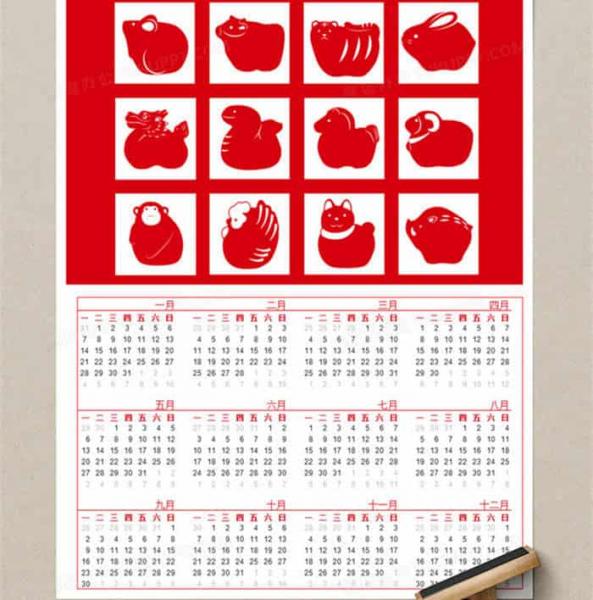
10000 Years Calendar (Wan Nian Li) is the oldest solar calendar in ancient China, which is more like a reference book and an invaluable tool for farming and daily life of Chinese people.
Legend has it that in ancient times there was a young man named Wan Nian, who felt that there was a natural law for the change of seasons and climate, and wanted to find out the specific rules of nature. When he went up the mountain to chop firewood, he was inspired by the shadows of trees and water dripping on the cliffs, and created a sundial that measures the shadow of the sun to fix the time, and a five-layer clepsydra that calculated the time.
When Wan Nian knew that the emperor of Shang Dynasty - Zu Yi was worried at that time because of the uncertainty of the time, he nominated himself to create a calendar for the country and benefit all the people.
A few years later, Zu Yi went to visit Wan Nian. When he saw the poems on natural laws carved on the Sun & Moon Altar, he knew that Wan Li had made it. The young man pointed to the sky and said to the emperor: "The new year begins again, please set a holiday, Your Majesty." Emperor said: "Spring is the beginning of the year, so it's called the Spring Festival." It is said that this is the origin of the Spring Festival.
After long-term observation, Wan Nian worked out an accurate calendar called “Tai Yang Li” (meaning solar calendar). When he presented it to the royal court, the white-bearded emperor was very moved. To commemorate the achievements of Wan Nian, he named the solar calendar as Wan Nian Li, literally meaning 10,000 years calendar. In memory of Wan Nian, folks called the first day of a year as “Nian”, hence the Chinese New Year.
>> Further reading on The 24 Solar Terms of China
Chinese New Year Story #4 - the Legend of the Rat Marrying off his Daughter
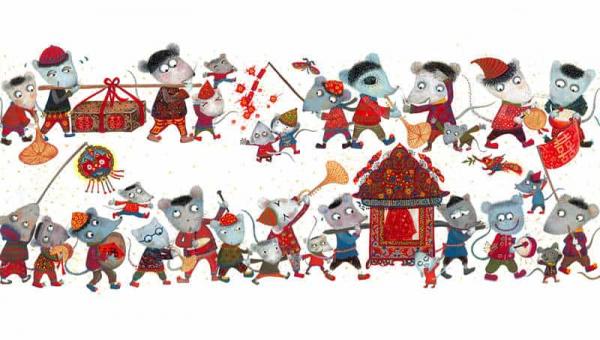
It is a famous Spring Festival folklore that widespread in many parts of China. But the date varied from place to place. In the region of the south of lower reach of the Yangtze River (Jiangnan area), rats are thought to be harmful and unlucky, so they must be married off before the Lunar New Year comes. In this way, a safe and auspicious year will be expected. Some places on the outskirts of Shanghai say that rats get married on the 16th day of the first lunar month. That night, every family will fry sesame candy, which is a wedding candy for the rats’ wedding.
According to the legend of North China, rats marry off their daughters on the night of the 25th of the first lunar month. On this night, every household should not turn on the lights. The family members sit together without saying a word and eating in the dark. The meal includes fried soybeans, "mouse claws" and "scorpion tails", which are made of wheat flour. Without light and noise, it is convenient for the rats to marry off their daughters, so the rats can go away smoothly.
Chinese New Year Story #5 - the Legend of "Nian" Beast
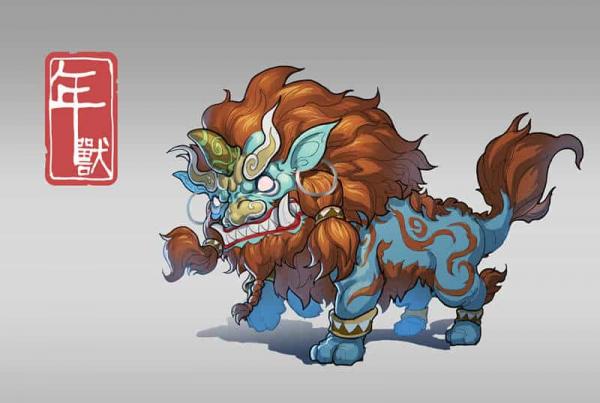
It is a famous Spring Festival legend. There was a monster called "Nian" long long ago. It was very fierce and brutal that it would ravage the world every Chinese New Year's Eve, devouring livestock, and killing people. Later, an old man came to the village and taught the people to drive away "Nian". "Nian" is most afraid of red color, fire and explosion. Therefore, During the Chinese New Year, most people usually wear red and new clothes, paste the red spring couplets on the door, and set off firecrackers. Later, all these activities became the popular customs and traditions of the Chinese New Year.
Chinese New Year Story #6 - the Legend of Setting off Firecrackers in the New Year
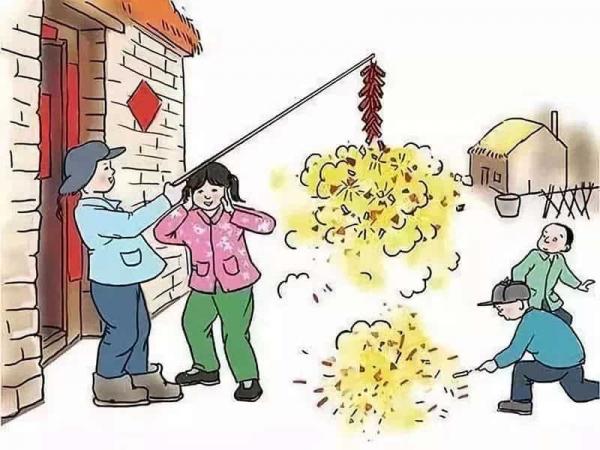
The original intention of setting off firecrackers during the Chinese New Year was to dispel bad luck and bring good luck. According to ancient records, firecrackers were so magic and blasting that they were used to drive away evil spirits in old days. They can also be used to drive away wild beasts when sleeping in the wild. Later besides during the Spring Festival, people would set off firecrackers on big days and other festivals in hopes of good luck.
Chinese New Year Story #7 - Posting Door God
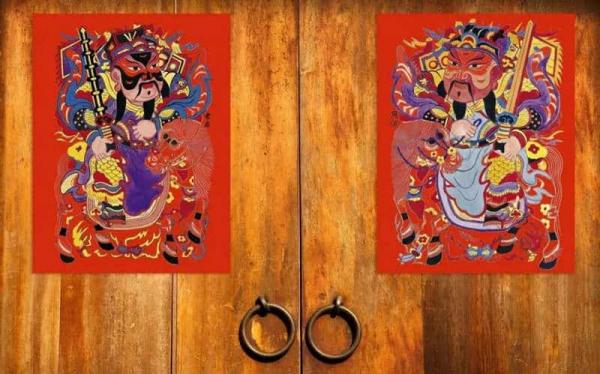
According to ancient Chinese mythology, there are two generals named Shen Tu and Yu Lei, who excel in catching ghosts and maintaining peace in the world. Believing they can dispel the evil spirits, the folks usually make peach wood charms with the names or carved portraits of the two generals on them, and hang them on the ancient double-leaf door.
Until Song Dynasty, the peachwood charms have gradually turned into Spring Festival couplets made of red paper, which is more convenient to prepare and decorative.
This Lunar New Year folklores believe that the door gods is a symbol of righteousness and force, which can drive away demons and ghosts. With wide-open eyes, generals’ armor and powerful weapons, they are always in pairs on the door. After the Tang Dynasty, two famous generals called Qin Shubao and Yu Chigong also became door gods for defending Emperor Taizong of Tang Dynasty to sleep peacefully. Nowadays they are more popular images as the door god. Shen Tu and Yu Lei are rarely seen.
Chinese New Year Story #8 - the Legend of Posting Spring Festival Couplets
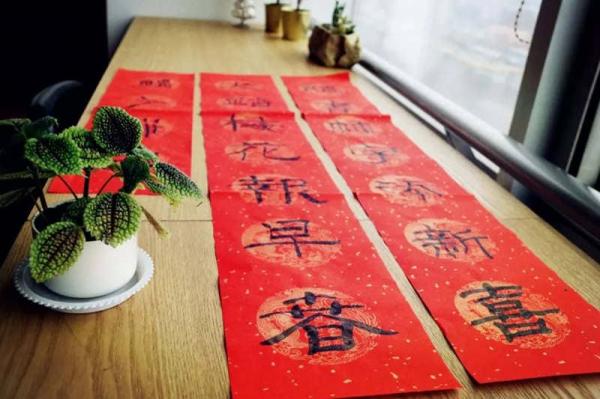
The original source of the Spring Festival couplets was the above-mentioned peach wood charms of Shen Tu and Yu Lei. During the period of Five Dynasties (907-960), people began to replace the names of Shen Tu & Yu Lei with 2 propitious verses. Spring couplets became common in the Song Dynasty and widespread during the Ming and Qing Dynasties.
It is said that after the first emperor of Ming Dynasty - Zhu Yuanzhang made Jinling (current Nanjing) the first capital of Ming Dynasty, he ordered the citizens of the city to paste the spring couplets on both sides of a doorframe during the festival, and he also traveled to admire them in person. Later, literati class regarded writing couplets as a style of calligraphy, so it has became a social fashion and a Chinese New Year tradition since then.
Chinese New Year Story #9 - The Legend of "Fu" (福, meaning blessing, good luck)
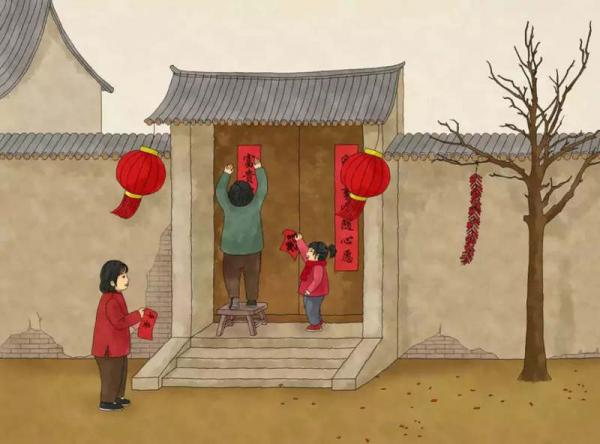
During Lunar New Year in China, on the doors and windows of Chinese homes, you will often see some bright red "Fu" characters pasted normally or upside down. There was a legend about the reason of pasting "Fu" upside down. The first emperor of Ming Dynasty - Zhu Yuanzhang ordered to put the "Fu" posters on the doors of some houses as a mark and intended to kill someone in the families.
In order to prevent massive killings, the kind and merciful Empress Ma made all the residents post "Fu" on their doors before dawn. Certainly, no one dared to disobey Empress Ma's will, so the character "Fu" was posted on the door of every house. Among them, some households are illiterate, and they finally stick the "Fu" upside down.
The next day, the emperor sent soldiers to catch the victims, but they found that every household had "Fu" character posted on the door, while few families did it upside down. Upon hearing the report, the emperor burst into fury, and immediately ordered his army to slaughter the whole family. At the critical moment, the empress hurriedly went to talk to the emperor: "The family knows that you are visiting today and deliberately put the character upside down. Doesn't this mean 'Fu Dao' (literally meaning blessing comes)?" Then the emperor thought the explanation did make sense and ordered to release those people in jail. Since then, people have put up the "Fu" upside down (but usually not on the front door) during Chinese New Year, seeking auspiciousness and commemorating the Empress Ma.
Chinese New Year Story #10 - The Legend of Staying up all night on Lunar New Year’s Eve
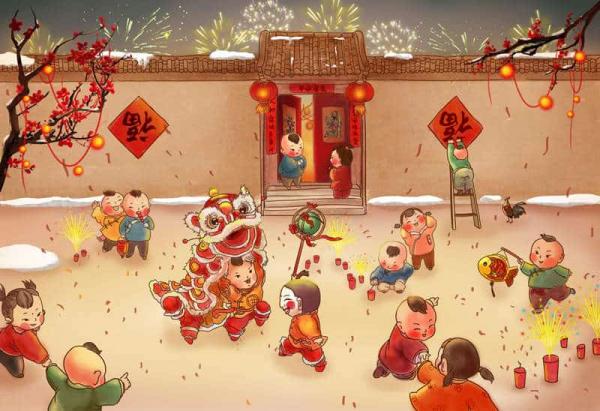
The custom of staying up late to welcome the arrival of the Chinese new year is no longer as popular as before. Why do Chinese people do this on the Lunar New Year’s Eve? Different places may have different legends and stories about it.The most widely-accepted version is still related to the monster "Nian". Legend has it that in ancient times, the ferocious monster "Nian" would wreak havoc on the world every Lunar New Year's Eve. After the people mastered the pattern and rule of Nian’s activities, they called the night of Lunar New Year's Eve as "New Year's Barrier"(年关). Traditionally every family will prepare a good meal in advance.
To smoothly pass through the life barrier, all family members stay at home and sit together to enjoy the sumptuous dinner on Chinese New Year’s Eve, as no one knows whether Nian will come or not. After eating, everyone doesn't go to bed, but sit and chat with each other until midnight. When the new year arrives, people will set off firecrackers for the Spring Festival celebrations and scare away the monster Nian.
Further Reading: